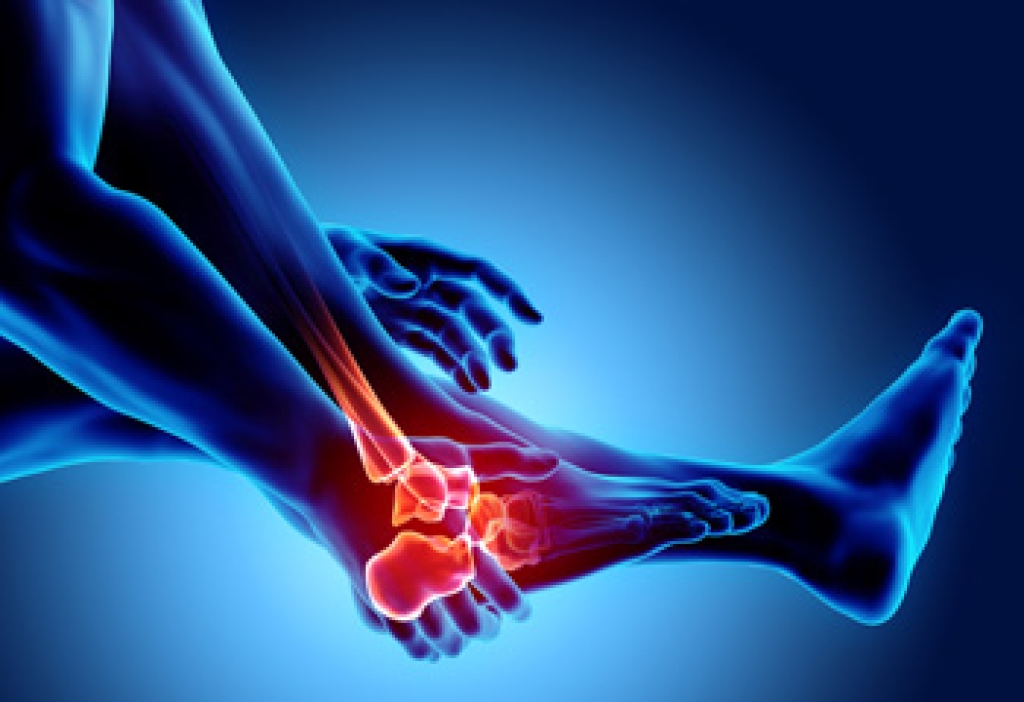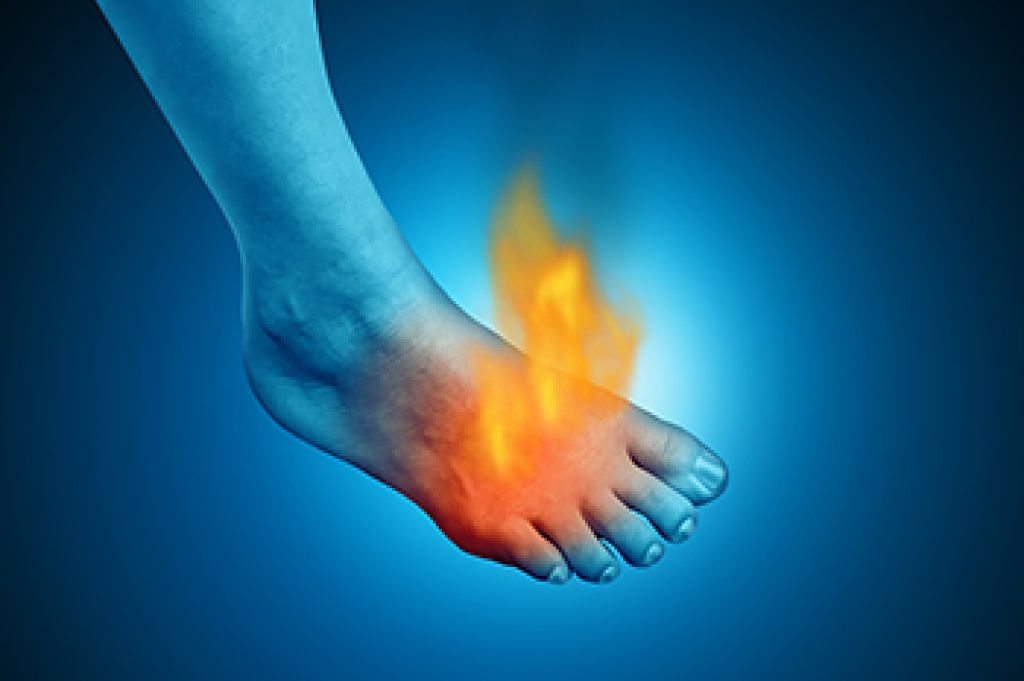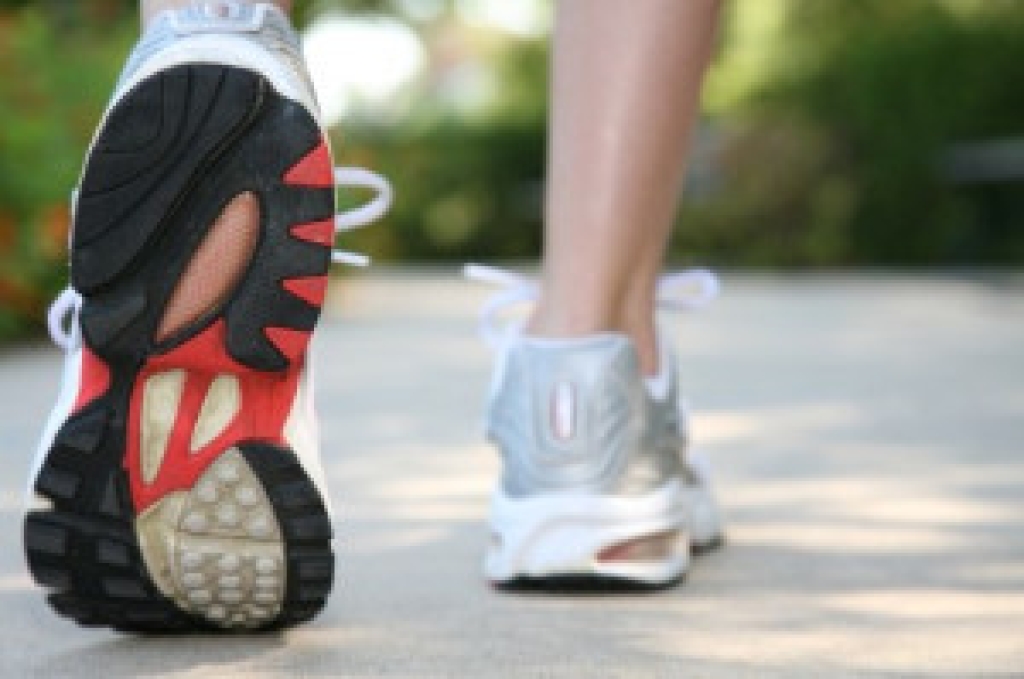Connect With Us
Blog
Blog
The Anatomy of a Foot Stress Fracture

A foot stress fracture is a common injury resulting from repetitive strain and overuse of the bones in the foot. Unlike acute fractures caused by sudden trauma, stress fractures develop gradually due to the cumulative effect of repetitive stress on the bones, often stemming from activities like running, jumping, or prolonged standing. These microcracks typically occur in weight-bearing bones, such as the metatarsals, and can lead to localized pain, swelling, and tenderness. Foot stress fractures are particularly prevalent among athletes and individuals engaged in high-impact activities. Recognizing the symptoms, which may mimic other foot conditions, is essential for an accurate diagnosis and timely intervention. Rest, along with wearing proper footwear and a gradual return to activity, forms the cornerstone of treatment. If you have endured a foot stress fracture, it is suggested that you consult a podiatrist who can confirm the diagnosis and offer the treatment method that is best for you.
Stress fractures occur when there is a tiny crack within a bone. To learn more, contact Paul Potach, DPM from Illinois . Our practitioner can provide the care you need to keep you pain free and on your feet.
How Are They Caused?
Stress fractures are the result of repetitive force being placed on the bone. Since the lower leg and feet often carry most of the body’s weight, stress fractures are likely to occur in these areas. If you rush into a new exercise, you are more likely to develop a stress fracture since you are starting too much, too soon. Pain resulting from stress fractures may go unnoticed at first, however it may start to worsen over time.
Risk Factors
- Gender – They are more commonly found in women compared to men.
- Foot Problems – People with unusual arches in their feet are more likely to develop stress fractures.
- Certain Sports – Dancers, gymnasts, tennis players, runners, and basketball players are more likely to develop stress fractures.
- Lack of Nutrients – A lack of vitamin D and calcium may weaken the bones and make you more prone to stress fractures
- Weak Bones – Osteoporosis can weaken the bones therefore resulting in stress fractures
Stress fractures do not always heal properly, so it is important that you seek help from a podiatrist if you suspect you may have one. Ignoring your stress fracture may cause it to worsen, and you may develop chronic pain as well as additional fractures.
If you have any questions please contact our offices located in Wheeling and Berwyn, IL . We offer the newest diagnostic and treatment technologies for all your foot and ankle needs.
Ingrown Toenails and Infection Control

Ingrown toenails, a common foot ailment, occur when the nail's edge grows into the surrounding skin, leading to discomfort and potential infection. Effective infection control is critical in managing ingrown toenails. To prevent infections, it is important to maintain good foot hygiene. Keep your feet clean and dry, and trim your nails straight across to avoid sharp edges. Additionally, soaking your feet in warm, soapy water can help soften the nail and reduce inflammation. Wearing comfortable, well-fitting shoes that provide adequate toe space will help prevent ingrown toenails. In cases where an infection develops, or for severe or recurring ingrown toenails, it is suggested that you schedule an appointment with a podiatrist who can provide solutions, including possible nail removal.
Ingrown toenails may initially present themselves as a minor discomfort, but they may progress into an infection in the skin without proper treatment. For more information about ingrown toenails, contact Paul Potach, DPM of Illinois . Our practitioner can provide the care you need to keep you pain-free and on your feet.
Ingrown Toenails
Ingrown toenails are caused when the corner or side of a toenail grows into the soft flesh surrounding it. They often result in redness, swelling, pain, and in some cases, infection. This condition typically affects the big toe and may recur if it is not treated properly.
Causes
- Improper toenail trimming
- Genetics
- Improper shoe fitting
- Injury from pedicures or nail picking
- Abnormal gait
- Poor hygiene
You are more likely to develop an ingrown toenail if you are obese, have diabetes, arthritis, or have any fungal infection in your nails. Additionally, people who have foot or toe deformities are at a higher risk of developing an ingrown toenail.
Symptoms
Some symptoms of ingrown toenails are redness, swelling, and pain. In rare cases, there may be a yellowish drainage coming from the nail.
Treatment
Ignoring an ingrown toenail can have serious complications. Infections of the nail border can progress to a deeper soft-tissue infection, which can then turn into a bone infection. You should always speak with your podiatrist if you suspect you have an ingrown toenail, especially if you have diabetes or poor circulation.
If you have any questions, please feel free to contact our offices located in Wheeling and Berwyn, IL . We offer the newest diagnostic and treatment technologies for all your foot care needs.
Neuropathy and Burning Feet

Experiencing a persistent burning sensation in your feet may indicate neuropathy has developed. The sensation of burning feet often results from nerve damage and is a common cause of this type of discomfort. While diabetes related neuropathy can be easily diagnosed, sudden or rapidly worsening unexplained burning sensations may necessitate comprehensive testing. Diagnostic measures include electromyography, or EMG, to assess muscle function, and nerve conduction studies to evaluate impulse transmission. In rare cases, a nerve biopsy may be conducted for microscopic examination. Laboratory tests such as blood, urine, or spinal fluid analysis may also help to identify underlying causes, such as vitamin E deficiency or uremia. Tailoring treatment for burning feet to the underlying cause is essential. For diabetic patients, treatment involves blood sugar control, insulin, diet changes, and oral medication. Alcohol induced neuropathy requires abstinence for nerve recovery. Chronic kidney failure may necessitate dialysis, and hypothyroidism calls for synthetic thyroid hormones. If you suspect neuropathy may be the cause of burning feet, it is suggested that you schedule an appointment with a podiatrist who is trained to manage foot conditions that stem from neuropathy.
Neuropathy
Neuropathy can be a potentially serious condition, especially if it is left undiagnosed. If you have any concerns that you may be experiencing nerve loss in your feet, consult with Paul Potach, DPM from Illinois . Our practitioner will assess your condition and provide you with quality foot and ankle treatment for neuropathy.
What Is Neuropathy?
Neuropathy is a condition that leads to damage to the nerves in the body. Peripheral neuropathy, or neuropathy that affects your peripheral nervous system, usually occurs in the feet. Neuropathy can be triggered by a number of different causes. Such causes include diabetes, infections, cancers, disorders, and toxic substances.
Symptoms of Neuropathy Include:
- Numbness
- Sensation loss
- Prickling and tingling sensations
- Throbbing, freezing, burning pains
- Muscle weakness
Those with diabetes are at serious risk due to being unable to feel an ulcer on their feet. Diabetics usually also suffer from poor blood circulation. This can lead to the wound not healing, infections occurring, and the limb may have to be amputated.
Treatment
To treat neuropathy in the foot, podiatrists will first diagnose the cause of the neuropathy. Figuring out the underlying cause of the neuropathy will allow the podiatrist to prescribe the best treatment, whether it be caused by diabetes, toxic substance exposure, infection, etc. If the nerve has not died, then it’s possible that sensation may be able to return to the foot.
Pain medication may be issued for pain. Electrical nerve stimulation can be used to stimulate nerves. If the neuropathy is caused from pressure on the nerves, then surgery may be necessary.
If you have any questions, please feel free to contact our offices located in Wheeling and Berwyn, IL . We offer the newest diagnostic and treatment technologies for all your foot care needs.
How to Choose Shoes for Distance Running

Embarking on the journey of distance running necessitates a discerning choice in footwear, an essential companion for every stride. Wearing the right distance running shoes is one of the ways to avoid injuries. Designed with meticulous precision, distance running shoes are crafted to endure the relentless rhythm of long-haul runs. These shoes seamlessly blend support and cushioning, striking an equilibrium that cradles the foot through each mile. The robust yet lightweight construction becomes a symbiotic extension of the runner, mitigating impact and maximizing efficiency. Breathable materials envelop the foot, ensuring comfort and ventilation. The soles, engineered for durability, provide a reliable grip on the terrain beneath, enhancing stability and confidence. If you require additional information about the right type of shoe for your running needs, it is suggested that you consult a podiatrist.
You should always make sure your running shoes fit properly in order to avoid injury. For more information, contact Paul Potach, DPM from Illinois . Our practitioner can provide the care you need to keep you pain-free and on your feet.
Choosing the Right Running Shoe for Your Foot Type
Improper shoe sizing can cause a myriad of problems for your feet. Shoes that don’t fit you properly can lead to muscular imbalances in your body, which can result in foot, knee, and hip injuries.
Tips for Finding the Right Running Shoe
- Make sure you have a thumb’s width of wiggle room between the end of your longest toe and the front of the shoe.
- There should be little to no slipping at the heel
- Don’t assume your size in one shoe brand will be your size in another
- Do not lace up your shoes too tightly
- Walk around in the store with your new shoes before you buy them
If you have any questions, please feel free to contact our offices located in Wheeling and Berwyn, IL . We offer the newest diagnostic and treatment technologies for all your foot care needs.
Blog Archives
- 2025
- 2024
- 2023
- 2022
- 2021
- 2020


